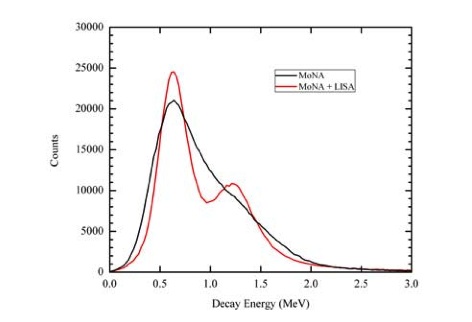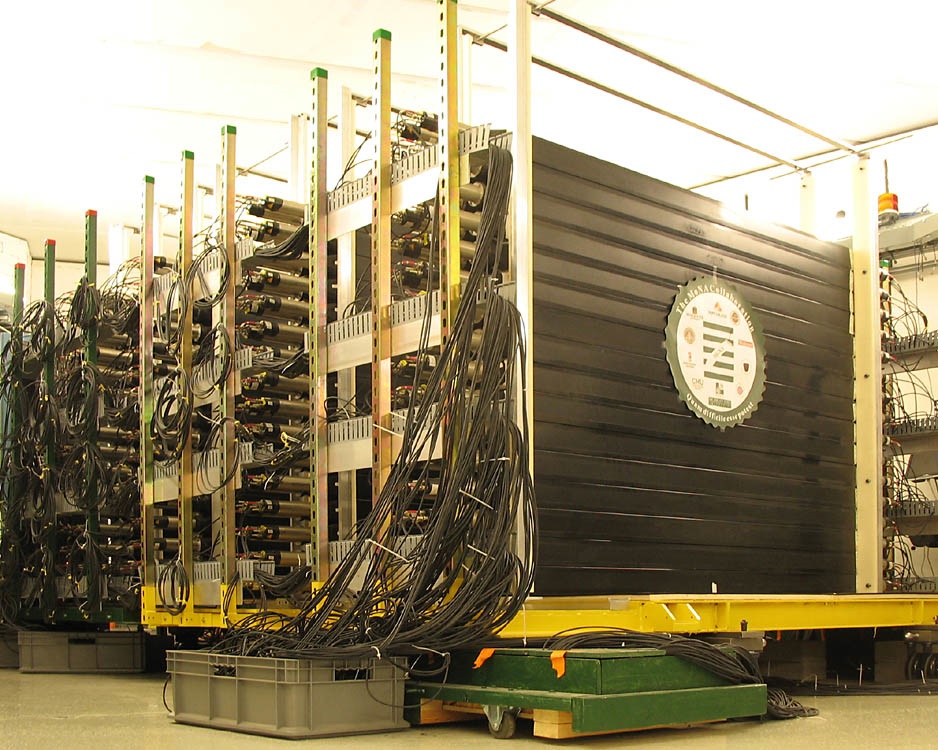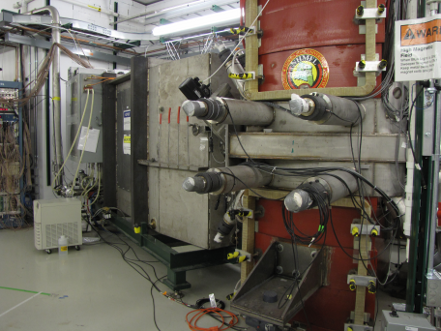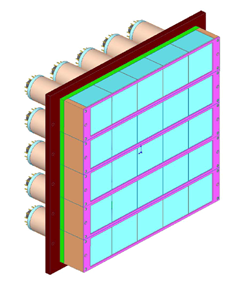LISA
 |
LISA, the Large multi-Institution Scintillator Array, has recently been completed by the Collaboration. It is based on the modular design developed for MoNA. Undergraduates at nine schools constructied and tested the modules and the detector was sucessfully commisioned in the summer of 2011.
LISA is used in conjunction with MoNA to increase our ability to measure angular distributions of reaction neutrons as well as improve resolution and/or efficiency of the detector system. |
|
 |
 |
|
The image above shows two of the many possible ways LISA can be positioned in the vault. Option (a) increases the angular acceptance of neutrons while option (b) is used to increase efficiency. A significant increase in efficiency allows thinner targets to be used. This significantly increases energy resoultion as shown in the image to the right. |
The simulation above shows the results of identical runs with two different target thickneses. As the MoNA+LISA system is approximately twice as efficient as MoNA alone the target can be half as thick for MoNA+LISA and still match the count rate in MoNA alone. As can be seen the thinner target allows the MoNA+LISA system to have much better energy resolution. | |



